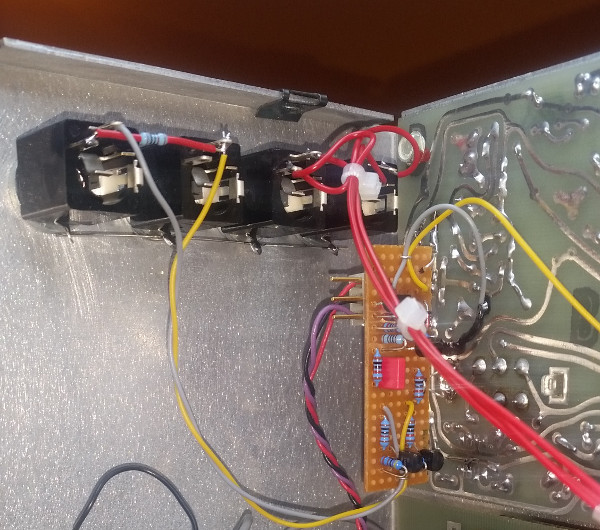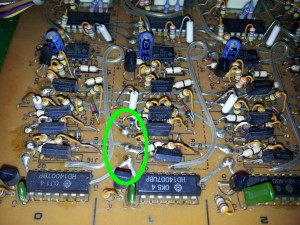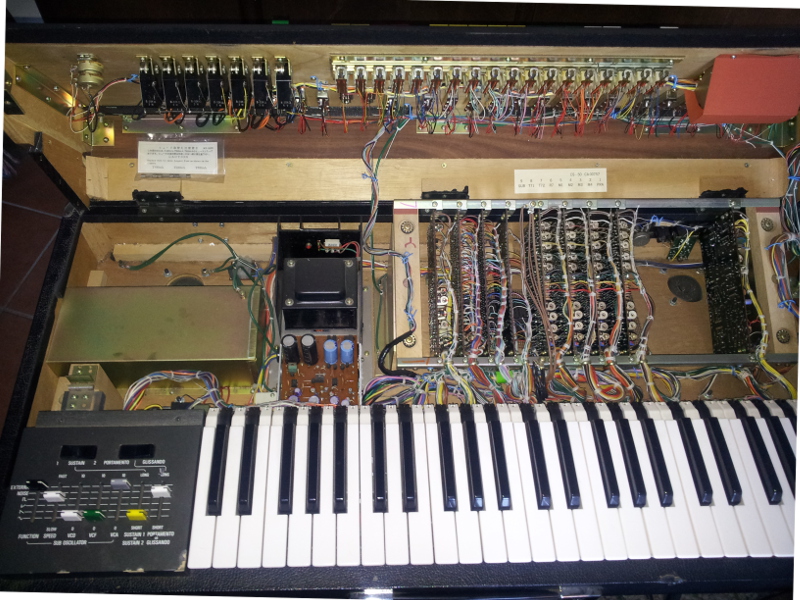Several approaches of adding CV/Gate to the Mk I Odyssey consist of not more than 3 or 4 1/8″ jacks with switch contact that interrupt and hook into the internal CV, gate and trigger lines. While the CV uses standard 1V/octave, the gate and trigger signals require a rather high amplitude of about 10 volts, with the additional impact that the gate level has a direct influence of the achievable output level of the AR envelope. Furthermore, both gate and trigger signals are needed for most modifications.
By adding a simple transistor circuit that resembles the levels generated by the Odyssey’s A board this ARP now works perfectly even with 5V gate and trigger levels and does not require the separate trigger signal anymore, although the trigger input jack is still provided for special purposes.
The prototype for the improved CV / Gate modification in action




